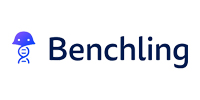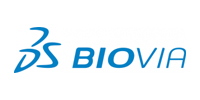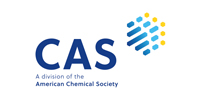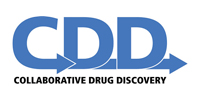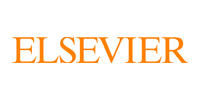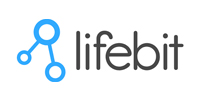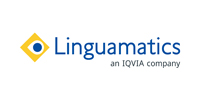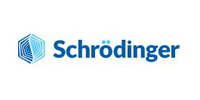2022 Pistoia Alliance Annual European Conference
Pistoia Alliance’s Annual European Conference: Driving Patient Centricity in R&D
The voice of the empowered patient is on the rise. Through a series of keynote presentations, focused discussions, and breakout sessions, the Pistoia Alliance’s Annual European Conference focused on Patient Centricity in R&D in an effort to look at the challenges and opportunities for embedding patient centricity within the biopharma value chain—from early discovery right through to post commercialization and its potential for real-world data insights.
Keynote speaker outlined pandemic uses for machine learning in pharma
During a lively keynote panel discussion at the Pistoia Alliance’s annual European conference, experts discussed the need for the pharma and health care industry to rethink the language used to discuss people with health conditions and how patient involvement and insight can lead to better outcomes. This thought-provoking discussion concluded with a story about how, in the end, a dog can sometimes be the best medicine of all.
The panel members, led by Pistoia Alliance Advisory Board member Bryn Roberts, Global Head of Data and Analytics, Roche Diagnostics, agreed on some new terminology. Instead of the patient, panelist Birgit Bauer, Digital Health & Social Media Expert, Manufaktur für Antworten UG, said she prefers to be called a woman living with multiple sclerosis. Birgit Bauer also admitted she dislikes the term “patient journey,” and prefers to see her experience as more of a pathway.
“I’m sorry,” Birgit Bauer said, “I’m not on a trip. It’s not an all-inclusive holiday in the Caribbean sea.” That is why she calls her popular blog, “Almost Normal: My Life with MS.” “To live with a chronic disease means to live an extraordinary life,” she added. “It’s not a normal life, it’s just almost normal because the disease affects me every day, from time to time. It’s not a journey, it’s a path. It’s a way through my life.”
Instead of patient centricity, panelist Katherine Capperella, VP, Global Patient Engagement Leader for Janssen Pharmaceuticals, Johnson & Johnson, said her company encourages staff members to use the terms patient engagement or patient involvement instead of patient centricity.
“We need to rethink a little bit about what language we use,” Roberts said. “In turn, that will also transform our mindset.”
Changing the language and terminology is just one-way people living with diseases are having an important impact on health care, said panelist Thomas Hach, Executive Director, Patient Engagement Cardiovascular, Renal & Metabolism, Novartis, and a physician by training. Since he has also participated in clinical trials as a patient, he has a unique perspective from both sides of the pharma and health care industries.
“When I was a doctor, I thought patients didn’t have a clue and they had better listen to what I say. But it’s actually the other way around,” Hach said. “Patients will be the biggest disrupters in health care, now and in the future especially. We better listen to them, and really listen to them.”
Birgit Bauer agreed that the first priority is better communication. “Sometimes you feel like a number. You’re lying in the bed and doctors are standing around you,” she said. “They are discussing you, but they don’t discuss it with you.”
Meanwhile, clinical trial participants willingly give the pharma industry the data they need to develop new drugs and treatments. Hach explained the need to circle back and show the participants the impact and value that the data generates. And, it’s important that the information is explained in simple, understandable language, Birgit Bauer added.
“When you live with a disease, you want to learn something about that disease, you want information,” she said. “We have to make decisions about treatments, we have to plan steps for our future. Every piece of information can help us to make better decisions.”
By simply listening, Novartis has made its clinical trials more human-centric, Hach explained. For example, in a leukemia study, clinicians felt they needed to do five repeated bone marrow biopsies to get the most accurate data they needed. When asked for feedback, participants responded loud and clear: they said, “No way, five bone marrow punctures in one year? It’s not going to happen… ” Patient feedback had a positive impact on trial recruitment.
Putting the people living with the disease first is the best way to bring all of the collaborators together, focused on the right priorities, said panelist Patrick Lample, Principal Specialist Solutions Architect, Healthcare and Life Sciences, Amazon Web Services.
After discussing ideas around how the Pistoia Alliance could help the industry unlock data for the benefit of patients and collaborate even more broadly with other patient engagement initiatives, the panel discussion ended with Hach’s story about how listening to a patient and the patient’s family can change a physician’s intervention.
As a physician, he informed one of his patient’s insulin was the best way to treat his diabetes. The patient’s wife had an alternative treatment plan in mind: adopting a dog. Three months later, the patient returned to his office, 15 pounds lighter, with a good HbA1c score. The dog provided an outlet for exercise and emotional support.
“A dog isn’t in the medical textbook, but it solved his problem. The person living with the disease proved me wrong,” Hach said, having learned a lot from this experience. “So, that is why we better listen to the people because sometimes they know so much more than we do.”
Speaker
- Chaired by Bryn Roberts, Global Head of Data and Analytics, Roche Diagnostics
- Birgit Bauer, Digital Health & Social Media Expert, Manufaktur für Antworten UG
- Katherine Capperella, VP, Global Patient Engagement Leader, Janssen Pharmaceutical
- Thomas Hach, Executive Director Patient Engagement Cardiovascular, Renal & Metabolism, Novartis
- Patrick Lamplé, Principal Specialist Solutions Architect, Healthcare and Life Sciences, Amazon Web Services
2022 European Conference Sponsors
Ready to Get Involved?
There has never been a more important time to collaborate to innovate as an industry! If you would like to find out more about the benefits of Pistoia Alliance membership and how you can get involved with all the different initiatives we run, please send an email to Membership@PistoiaAlliance.org.
Access the Recording
We will email you the recording.

